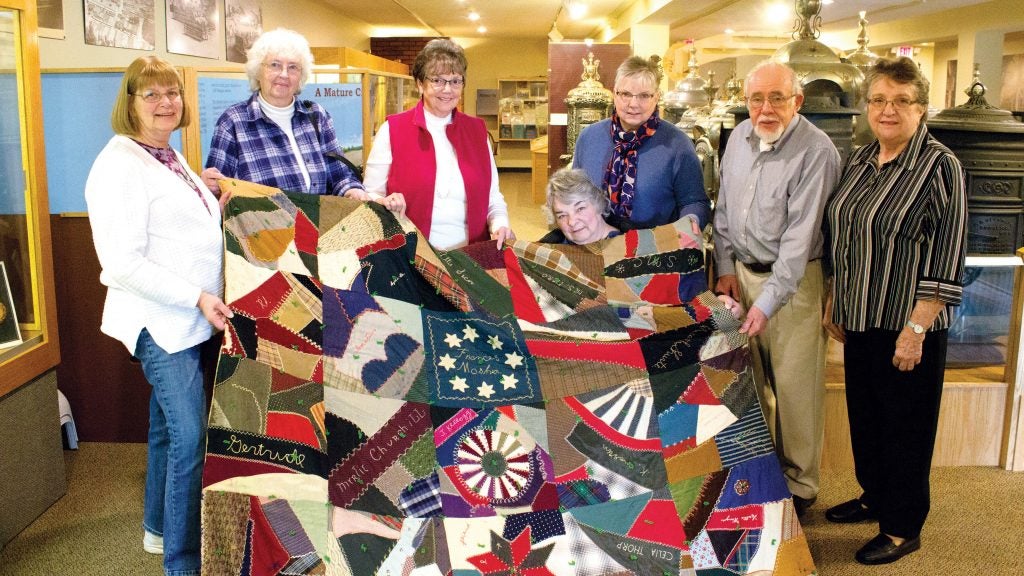Family donates old quilt to county historical society
Published 10:57 am Tuesday, November 7, 2017

- (Leader photo/TED YOAKUM)
DOWAGIAC — With its mishmash of decorative stitching and vibrantly colored fabrics, the newest addition to the Cass County Historical Society’s collection of artifacts at the historic Newton Home is certain to catch the eye of everyone who walks by it.
However, it is not the design of the massive, multicolored quilt that captured the attention of historic preservation society — but rather the names of the nearly 30 women who helped create it, years and years ago.
Included among the names are “Beeson,” “Shurte,” “Mosher” — families that called the region home for generations, and, in some cases, even have streets in the area named after them.
On Friday, several descendants of two of the women responsible for creating the quilt donated the blanket to the historical society, meeting inside the Dowagiac Area History Museum. The members of local history preservation group said they will place the quilt — estimated to have been sewn between 1898 and 1922 — on display inside Newton Home museum, where it may be appreciated by the public at large.
“It [the quilt] is a very cool thing, and I wanted to give it a great home,” said Marty Allen, the former owner of the quilt. “What is the point in leaving it in a tiny a box?”
Allen, of St. John’s, said the fabric has been in her family for three generations. Joining Allen in making the donation was her sister, Jane Keller, of Dowagiac, and her sister-in-law, Jan Ball, also of Dowagiac.
Allen’s grandmother, Mae Fiero Ball, was the younger sister of Bessie Fiero Dillman, one of the makers of the quilt — Dillman’s mother, Hester Van Riper Fiero, also helped make it.
Given how Bessie did not marry her husband, Joseph Dillman, until Feb. 22, 1898, and Hester Fiero did not die until Nov. 20, 1922, Allen estimates that the quilt must have been made at some point between those dates.
Mae Ball later gave the quilt to her son, Carson Ball, whose wife, Mary, bequeathed the quilt to their children in 2011 following her death.
The quilt is made up of various 14.5-inch segments, each apparently sewn by a different woman, as each square has a different signature sewn onto it. Outside of the name “L. Q. Aid and Friends” sewn on the center, neither Allen nor members of the historical society are clear why the group of women created the quilt, though they guess it was made to be sold, possibly to raise money.
“I can’t imagine these ladies did all this work just to give it away,” Allen said. “Maybe someone in my family bid on it, and it stayed with us this entire time.”
After keeping the quilt in her home for a while, Allen decided to donate it to a group that would ensure it would be taken care of. Given that the Dowagiac Area History Museum can only display items that fit into whatever theme it has established for its permanent and temporary exhibits, Allen decided that the historical society would be a better match. She also donated her grandmother’s spinning wheel to the group in the past, which is currently on display in the second floor of the Newton Home.
“Many times, these types of things get lost,” said Al Palmer, the historical society’s treasurer. “The people involved in making them are long gone, and it ends up in a yard sale. That is a tragedy.”
Once the Newton Home reopens to the public next spring, others will have a chance to see the quilt as well. Historical society members are hoping that others in the community may recognize their own family members’ names listed on the quilt, and may even be able to shed more light on its origins and history, members said.
People interested in donating items of local historical interest to the Cass County Historical Society may call (269) 684-0882.






